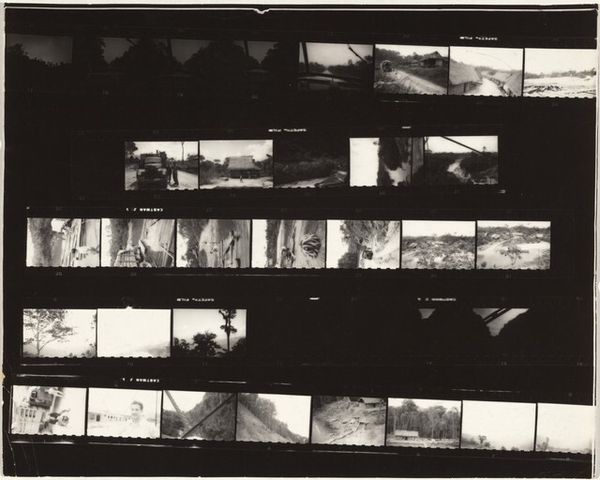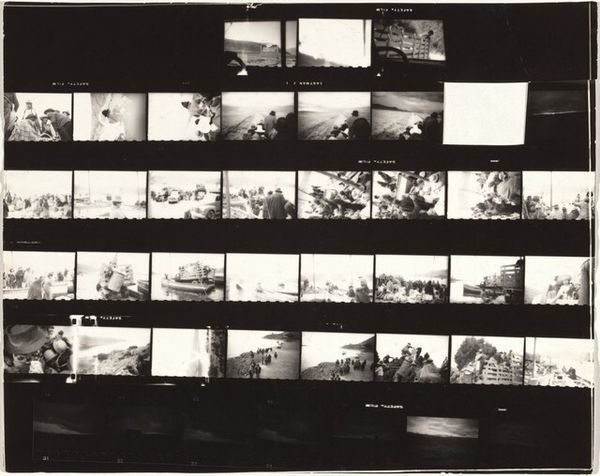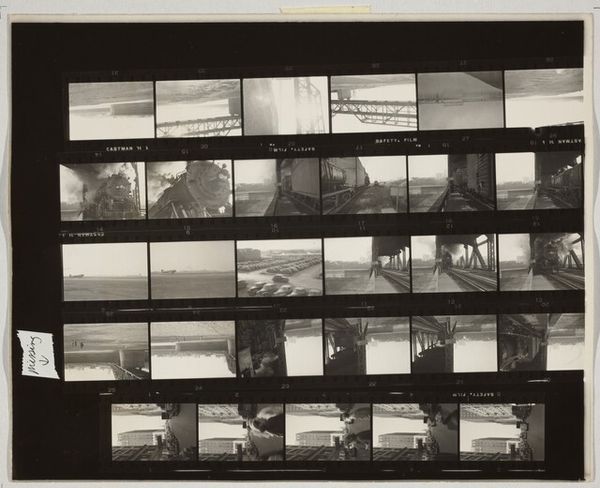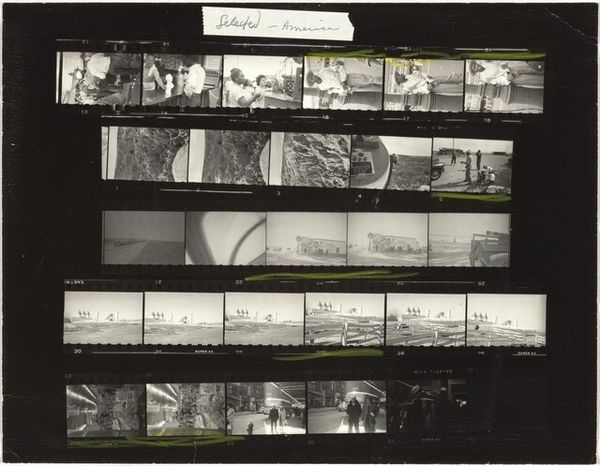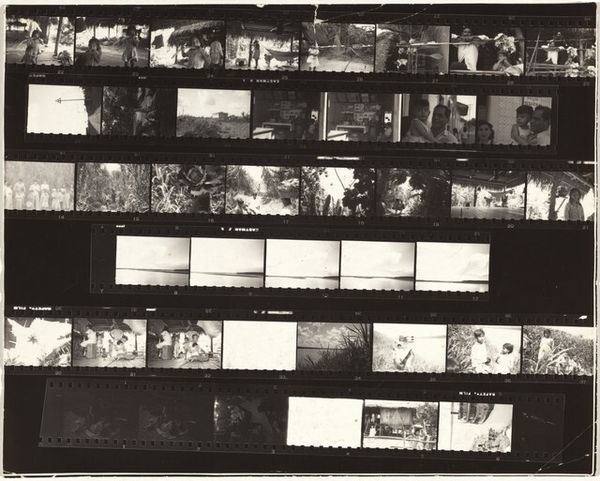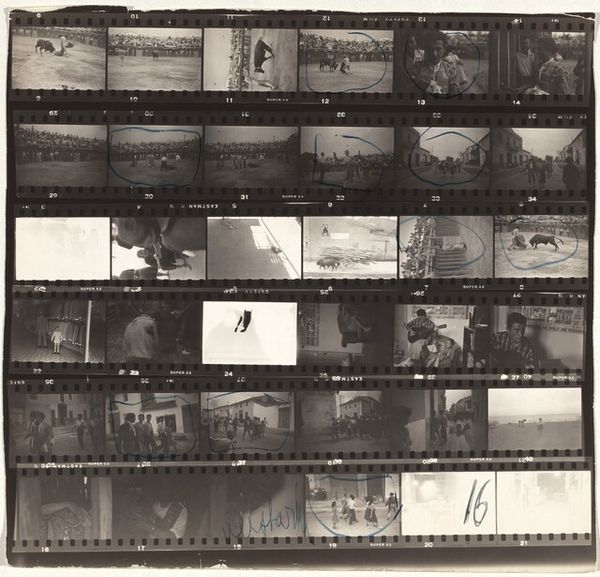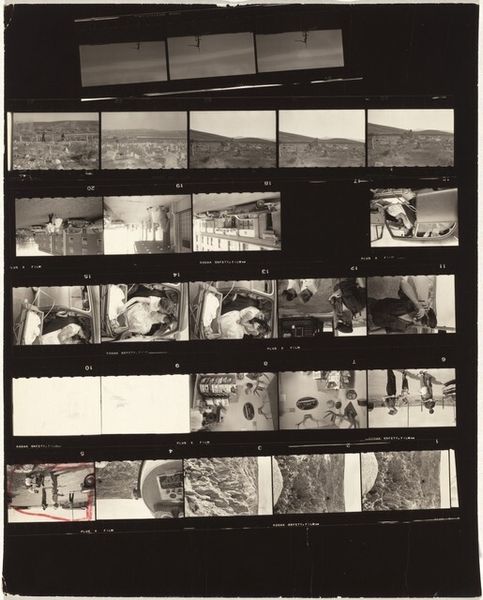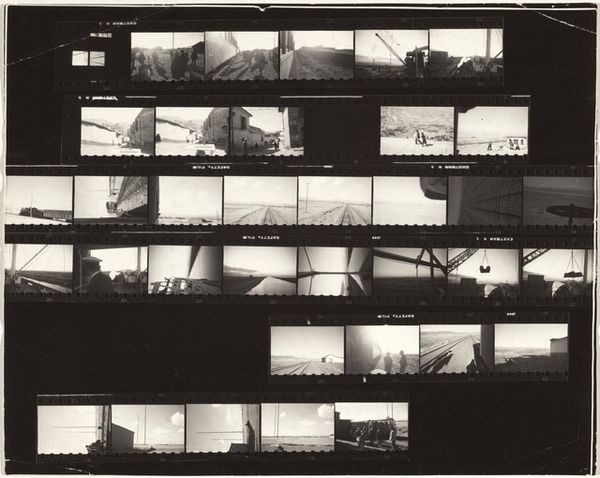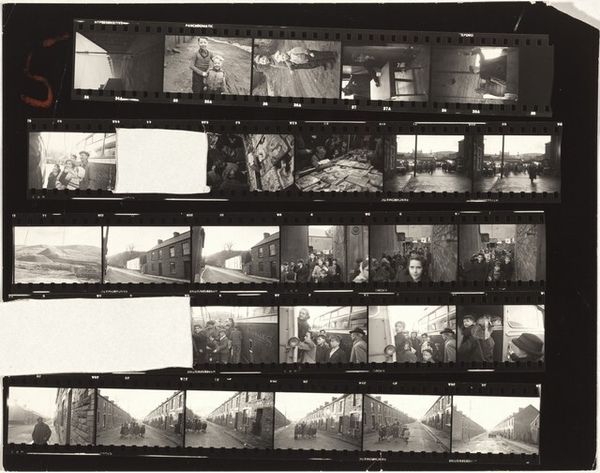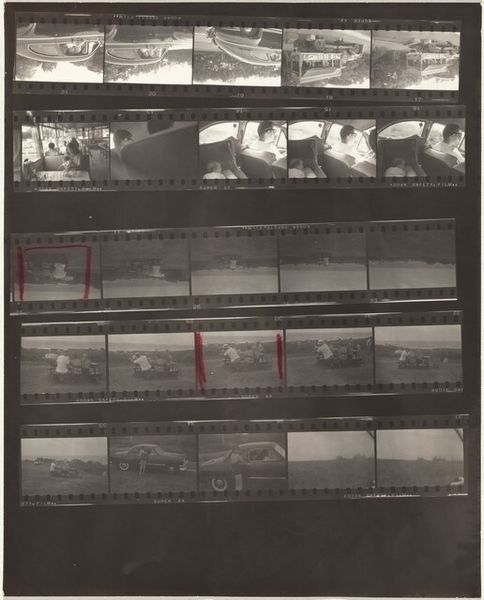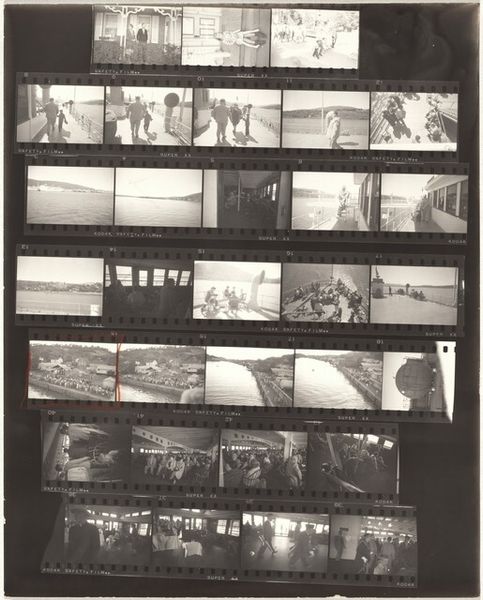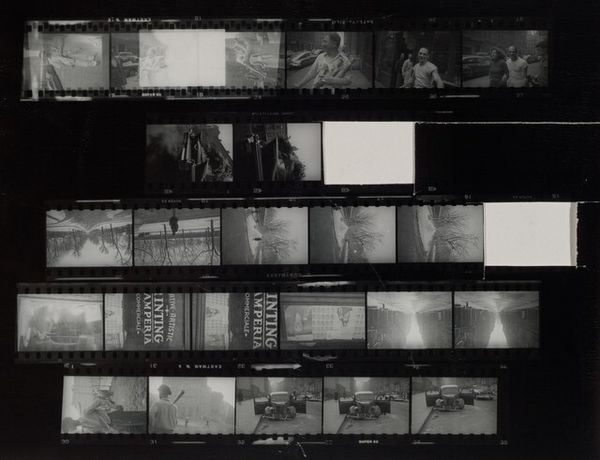
contact-print, photography, gelatin-silver-print
#
film photography
#
landscape
#
contact-print
#
street-photography
#
photography
#
gelatin-silver-print
#
monochrome photography
#
monochrome
Dimensions: sheet: 23.8 x 29.8 cm (9 3/8 x 11 3/4 in.)
Copyright: National Gallery of Art: CC0 1.0
Curator: We're looking at "South America and Spain 12," a 1948 contact print by Robert Frank. What's your first take? Editor: A roadmap, almost, to the artist's process. The materiality of the film strip itself becomes so central here—less a perfect image, and more an unveiling of labor. Curator: It really offers a glimpse into Frank’s eye as he traveled, doesn’t it? The high contrast in this gelatin silver print heightens the almost dreamlike quality of memory. There’s a fragmented sense of wandering through landscapes, of brief encounters. It’s romantic, melancholy... Editor: Romanticizing a bit too easily perhaps. Think about the conditions under which Frank worked, the availability—or lack thereof—of equipment, the social dimensions shaping what and how he photographed. This is a manufactured object; it has context and limits. The almost blurred snapshots invite the observer into what would likely be considered otherwise mundane moments of processing. Curator: And isn't it those supposedly mundane moments that truly reflect life? Frank isn't just documenting; he's filtering these cultures through his unique perspective. The sequence feels almost like visual poetry, capturing both the beauty and the stark realities of postwar life. The images themselves feel heavy with implication. What was it like, traveling like that then? Editor: Precisely. So what are the tangible social costs of postwar reconstruction, in terms of environmental damage or material scarcity in production? And it’s important to remember, a contact print wasn't necessarily intended for exhibition. This exposes the behind-the-scenes, transforming the unseen labor into a commodity. Curator: Yes, but in bringing that hidden process into the light, he elevates it. Don't you think? I am seeing the human soul trying to translate place into feeling. A place that then sits with you for good and bad. That is so profound! Editor: I think he forces the observer to be more conscientious, more cognizant of what’s going on when art is being made and when social and global inequities shape and enable such artmaking processes to begin with. Curator: So, ultimately, for me, it remains a poetic testament to a time of immense change and transition... Editor: And for me, a very practical one! Thinking about what we assign artistic value to, how we create art, and the material conditions which shape not only its creation, but our appreciation.
Comments
No comments
Be the first to comment and join the conversation on the ultimate creative platform.
